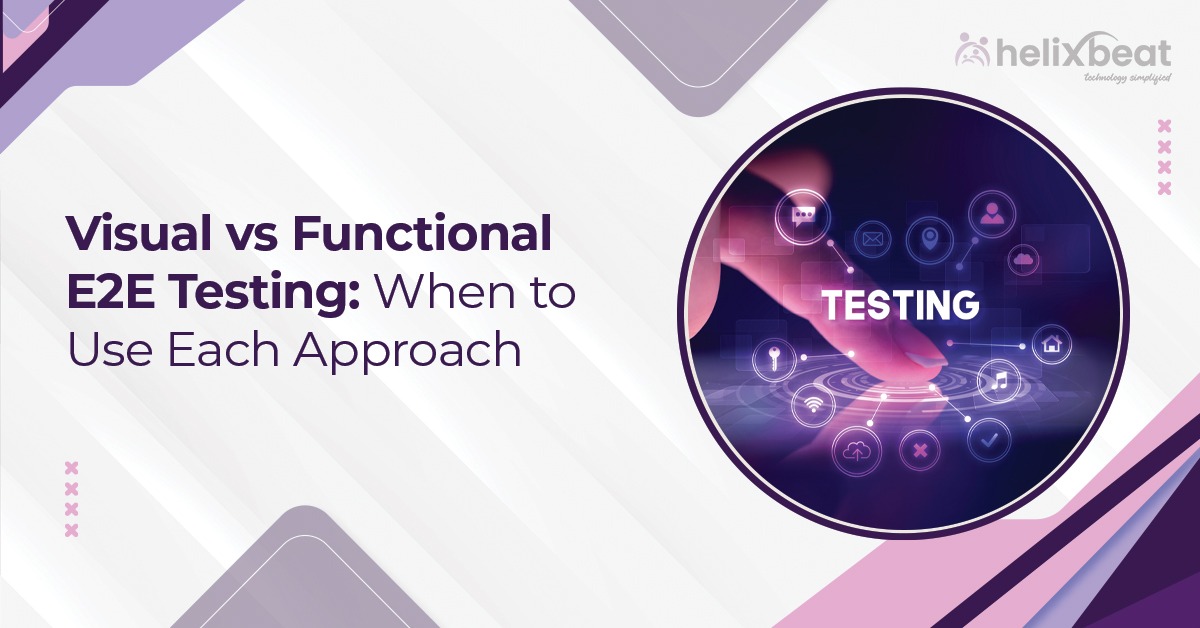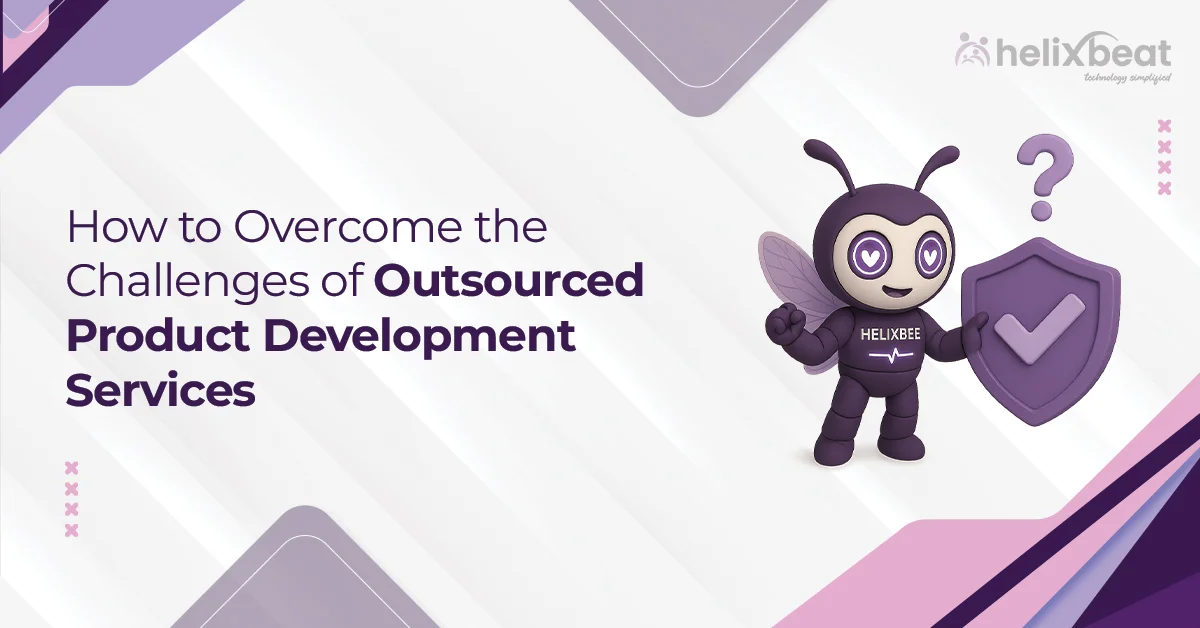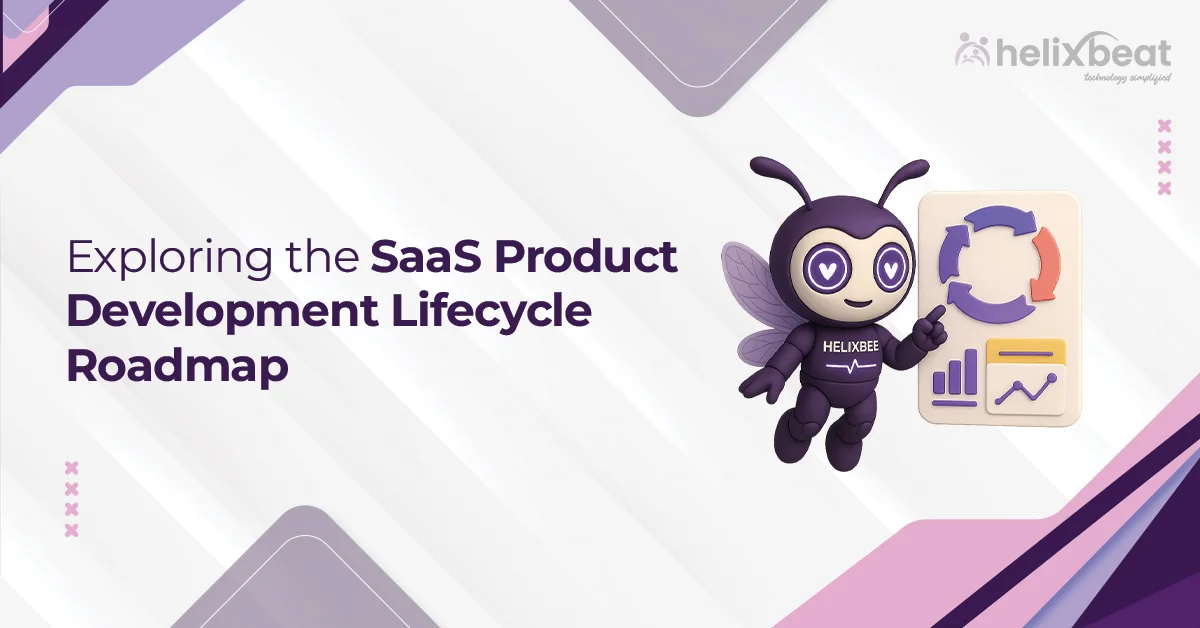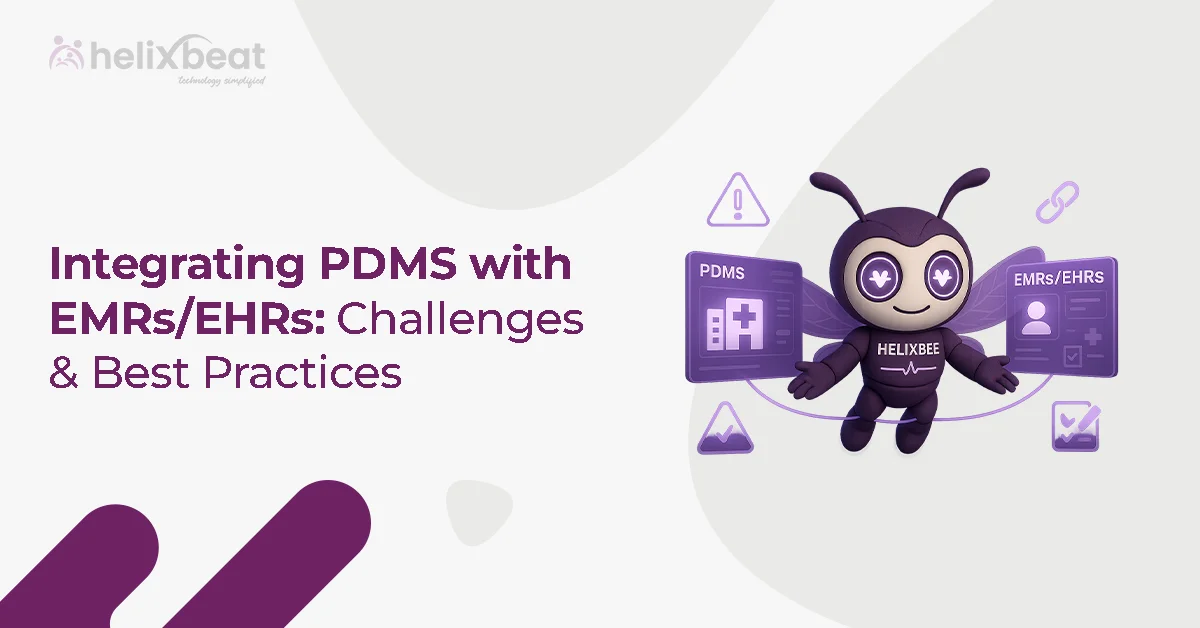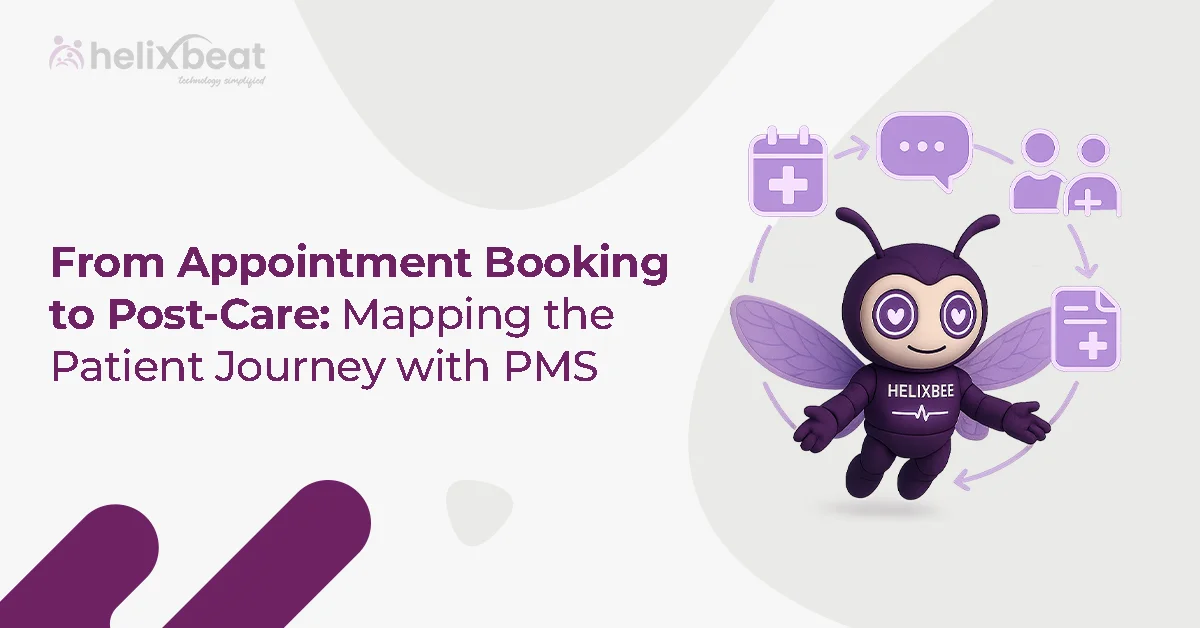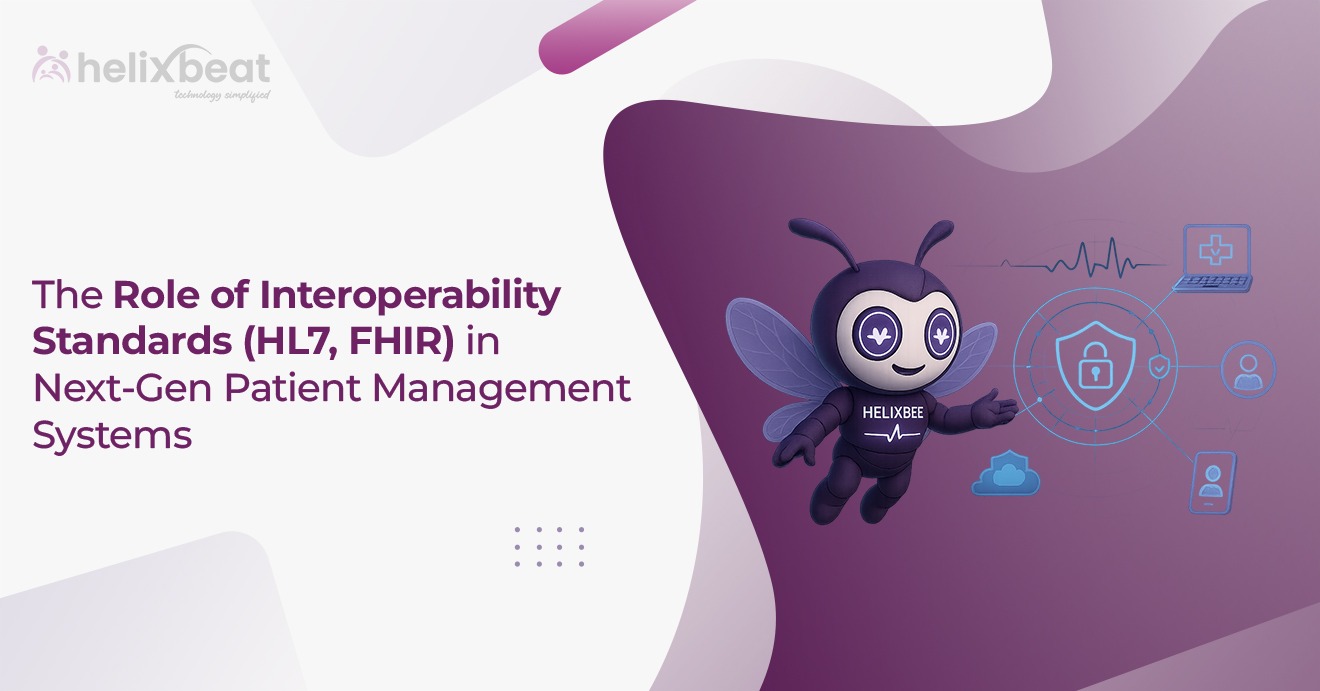According to a 2024 report by SmartBear, over 57% of critical software bugs are identified by users after release. This happens because many teams focus only on one part of the testing process. Some test only how the app works (functional testing), while others test only how it looks (visual testing).
But to give users a smooth and error-free experience, both need to be covered. For example, your checkout process may work fine, but if the “Buy Now” button is hidden or looks broken, users won’t complete their purchase.
That’s why it’s important to understand when to use visual testing, when functional testing is better, and how both fit into a smart end-to-end testing strategy.
Here, we’ll explain when to use the right testing method so your team can release better, more reliable software every time.

Table of Contents
What is End to End Testing?
End to end testing (E2E testing) checks whether your software works correctly from the user’s first click to the final step. It simulates real user journeys like signing in, using a feature, or completing a purchase—to see if everything functions smoothly across the entire system.
Instead of testing just one part (like a login form or a button), E2E testing looks at how different parts: front end, back end, databases, and third-party tools work together. This helps teams catch issues that only appear when everything is connected, making it a key part of reliable software releases.
Visual vs Functional End to End Testing: Key Differences
| Aspect | Visual E2E Testing | Functional E2E Testing |
| Primary Goal | Catch visual bugs—layout issues, styling errors, UI regressions | Validate user workflows and business logic from start to finish |
| What It Tests | How the app looks across browsers, devices, screen sizes | How the app works when users interact with it |
| Output Format | Screenshot comparisons, visual diffs, baseline images | Pass/fail based on test assertions and API/DOM interactions |
| Best Use Case | Design-driven apps, marketing sites, brand-consistent platforms | Complex web apps, e-commerce flows, user management systems |
| Blind Spot | Can’t catch broken logic or failed API calls | Can’t detect visual defects like alignment issues or broken layout |
When to Choose Visual End to End Testing
Visual end to end testing is the right choice when your application’s user interface (UI) plays a major role in the overall user experience. This type of testing is especially useful when layout, design consistency, or branding is critical to your product’s success.
You should use visual E2E testing when:
- Your app is design-heavy – If you’re building a landing page, portfolio, or marketing site, even small UI changes like padding shifts, font changes, or button misalignment can hurt the brand. Visual testing can catch these pixel-level differences by comparing screenshots before and after code changes.
- You support multiple devices or browsers – Visual regressions often occur when CSS behaves differently across browsers (Chrome vs. Safari) or screen sizes (mobile vs. desktop). Visual testing helps detect layout issues early by rendering your app in different environments.
- You use frequent front-end updates – When working with CSS frameworks (like Tailwind or Bootstrap) or modern UI libraries (like React or Vue), even small component updates can impact the overall layout. Visual tests help you detect unexpected changes that standard functional tests would miss.
- You rely on visual consistency for conversions – In e-commerce or SaaS dashboards, broken UI components like hidden CTAs or distorted price displays can directly impact user behavior and business KPIs. Visual testing ensures that key design elements remain consistent after deployments.
In short, choose visual E2E testing when what the user sees is just as important as what the app does.
When Functional E2E Testing Works Best
Functional end to end testing is essential when your focus is on how the application behaves, especially across real workflows and complex user scenarios.
A recent World Quality Report (2023) found that 74% of QA teams experienced release delays due to broken user flows. This shows that functional testing is key to catching issues that only appear when the full system is in use.
Here’s when functional E2E testing makes the biggest difference:
- Critical user flows – Whether it’s signing in, submitting a form, or completing a purchase, functional tests simulate actual user behavior and confirm that each step performs the expected outcome.
- API-driven systems – If your app depends on server-side logic or third-party APIs (for example, payment gateways or CRMs), functional testing checks that the front end and back end communicate correctly and handle failures gracefully.
- Regression prevention in agile teams – Frequent feature updates can unintentionally break other areas of the app. Functional tests help spot those issues early by validating entire workflows during each deployment.
- Complex business logic – In apps with features like pricing calculators, permission handling, or multi-step workflows, functional E2E tests ensure the logic holds up under real conditions and edge cases.
- CI/CD pipelines – Functional E2E tests are easy to automate and integrate with continuous integration tools like Jenkins, GitHub Actions, or CircleCI, making them a natural fit for fast-moving development teams.
In short, use functional E2E testing when you need to validate what your application actually does, not just how it looks.
Why Using Both Visual and Functional Tests Can Be a Good Idea
Testing only how your app works or only how it looks—isn’t always enough. Sometimes, problems happen even when one type of test passes. That’s why using both visual and functional end-to-end tests together can help you catch more issues before they reach users. Here’s how it helps in real-world situations:
1. Something Works, But Looks Broken
Imagine a shopping website where the “Add to Cart” button is working—but it’s the same color as the background, so no one can see it.
- A functional test says, “The button works, no problem.”
- A visual test says, “The button is invisible. That’s a problem.”
By running both tests, you catch bugs that affect how users use and see your app.
2. Forms and Flows Need More Than One Check
Think about a multi-step sign-up form. A functional test can check if the form is submitted correctly. But what if the layout breaks on mobile and some fields are hidden?
A visual test would catch layout issues.
A functional test would confirm that form logic and data submission work.
Together, they protect both the design and the user journey.
3. Design Updates Can Break Other Screens
Let’s say a developer changes the style of a common button used across the app. That one change could make buttons look wrong everywhere else.
- A visual test alerts you that the design changes unexpectedly.
- A functional test tells you whether clicking the button still works.
Using both helps you avoid surprise design issues caused by small code changes.
4. Faster, Safer Releases
If your team pushes updates regularly, you need fast and reliable tests. When you combine both visual and functional tests in your CI/CD pipeline, you:
- Catch more bugs automatically
- Reduce time spent on manual testing
- Feel confident shipping new versions
It’s a smart way to move fast without breaking things.
End to End Testing Best Practices
1. Prioritize critical user journeys, not edge cases
Focus your E2E tests on high-impact workflows like onboarding, transactions, and account management. Avoid bloating the suite with low-value scenarios—leave those to unit or integration tests.
2. Make tests data-driven and environment-independent
Parameterize test inputs and mock external dependencies like payment gateways or third-party APIs to reduce flakiness. Use test environments that mirror production configurations as closely as possible.
3. Include visual and functional assertions in the same workflow
Combine UI validation (using snapshot or visual diff tools) with behavioral checks in a single test where feasible. This hybrid approach can catch both functional regressions and UI drift with one execution.
4. Integrate E2E tests early into CI/CD pipelines
Run E2E tests as part of your build process with staging deployments. Automate test gating using quality thresholds like failure counts or timeouts to prevent unstable builds from progressing.
Deliver Bug-Free Software with Helixbeat’s E2E Testing
At Helixbeat, we help you catch bugs before your users ever see them. Our end-to-end (E2E) testing service checks your entire application from login to checkout to make sure everything works smoothly.
We combine both functional testing and visual testing in one smart workflow. Whether you’re building a complex web app, mobile platform, or SaaS product, our tests show real user journeys and catch issues early.
With Helixbeat, you can:
- Test faster with automation built into your CI/CD pipeline
- Spot hidden bugs that other tests miss
- Reduce release delays and improve user satisfaction
Want to launch your product without bugs? Get in touch with our team at Helixbeat and let us build a complete end-to-end testing strategy customized to your business.
FAQ:
1. What is the difference between end to end testing and regression testing?
End to end testing checks the entire flow of an application from start to finish to confirm all parts (UI, backend, databases, APIs) work together as expected.
Regression testing, on the other hand, checks if new code changes have accidentally broken existing features. It usually focuses on previously tested components, not the whole system.
2. What is the end to end testing process in short?
End to end testing involves simulating real user actions like logging in or making a purchase to check if all parts of the system (frontend, backend, APIs) work together as expected.
3. What is end to end testing vs system testing?
System testing checks the entire application as a single unit to verify it meets technical requirements. It focuses on internal functionality within the system.
End to end testing goes beyond this by testing real user flows across connected systems like frontend, backend, databases, and third-party services to simulate how the software behaves in real-world usage.
4. What is the difference between UAT and end to end testing?
UAT (User Acceptance Testing) is performed by actual users or clients to confirm the software meets business needs before going live.
End to end testing is done by QA teams to verify that all parts of the application work together properly. E2E testing usually happens before UAT.
5. Is E2E testing the frontend or backend?
E2E testing covers both the front end and back end. It checks how all components of the application work together as a complete system. For example, it tests if a button click on the front end triggers the right API call and updates the database correctly.



